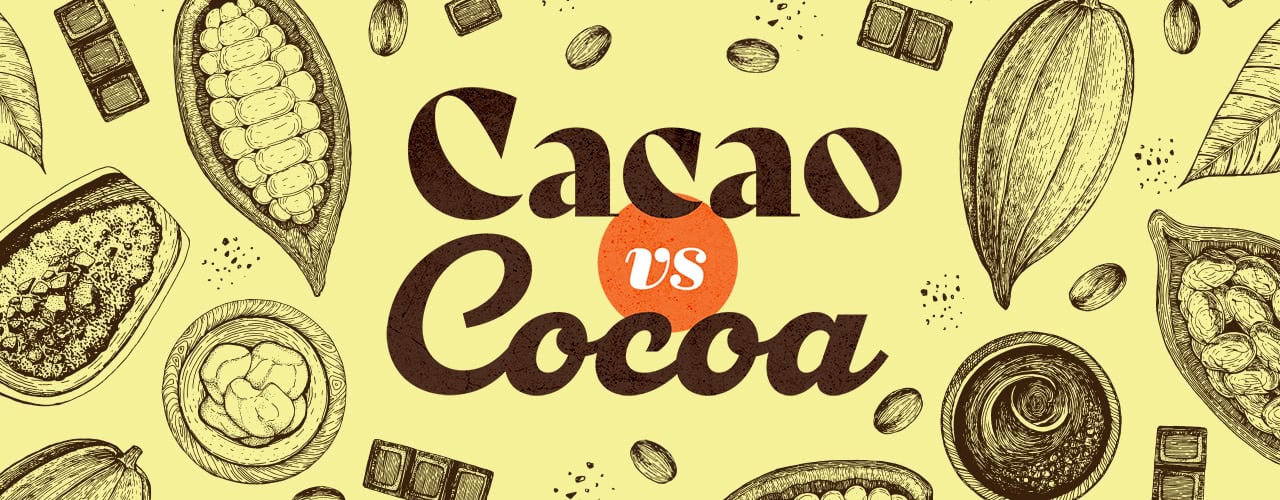What's the Difference Between Cacao and Cocoa?
Last updated on Apr 7, 2023Michale LeRoyCacao powder is popping up on menus and ingredient lists more often, but what is it and how is it different from regular cocoa powder? They're both types of chocolate, but cacao is considered a raw ingredient and cocoa is a processed ingredient. If you're curious about cacao powder, keep reading to learn more about this rich, chocolatey ingredient and how to use it the right way.
Shop All Cacao PowdersWhat Is Cacao Powder?
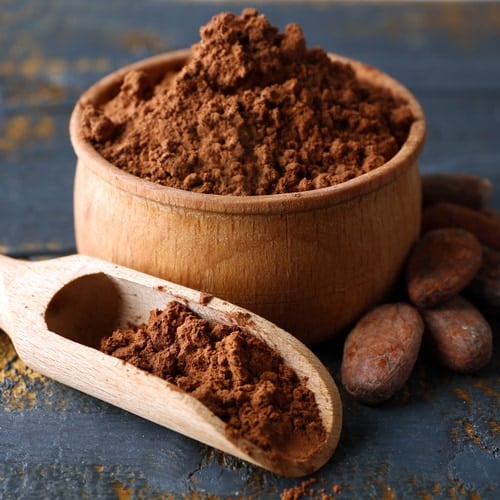
Cacao powder is made from ground cacao beans, which are the seeds of the cacao fruit. Each pod-shaped fruit contains about 35 to 50 seeds that are covered in sweet, white pulp. This jelly-like pulp is left clinging to the harvested seeds while they go through a fermentation process to develop the flavor of the beans. After fermentation, cacao beans are processed at a very low heat, then crumbled into cacao nibs or ground into powder.
What Does Cacao Taste Like?
Cacao powder and cacao nibs have a deep chocolate flavor that is more bitter than processed cocoa products. It tastes similar to a very dark chocolate bar that contains no sugar.
How to Pronounce Cacao
The proper way to pronounce the word cacao is kuh-kau. This is different from the pronunciation of cocoa, which is ko-ko.
Is Cacao Chocolate?
Cacao is considered chocolate in its purest form. It's the raw ingredient from which all chocolate is made, even white chocolate.
Can I Use Cacao Instead of Cocoa?
Yes, cacao powder can be used in place of cocoa powder with a 1:1 ratio. You can try this substitution in a variety of foods, but be careful with any recipe that calls for dutch-process cocoa. Unlike traditional cocoa powder and cacao powder, dutched cocoa is alkaline (instead of acidic). If you use cacao powder in place of dutch-process cocoa, the resulting texture and rise may be a little different than what you expect.
How to Use Cacao Powder
Cacao powder is becoming more well-known as a raw superfood ingredient, making it a great addition to menus that highlight healthy, whole-food dishes. Try using cacao powder instead of cocoa powder in these applications:
- Smoothies and Smoothie Bowls - Add a twist to your smoothie shop menu by using cacao powder in place of cocoa to make rich, chocolatey smoothies or smoothie bowls.
- Healthy Snacks - Cacao-dusted nuts, protein-packed cacao energy squares, and granola with cacao nibs are just a few of the healthy snacks you can make with cacao.
- Tonics and Elixers - Healthy tonics and teas that contain superfood ingredients and adaptogens (foods that help the body deal with stress) are becoming more prevalent on beverage menus. Instead of hot chocolate, try offering a hot cacao drink with coconut milk, ginger, and turmeric for a soothing anti-inflammatory beverage.
- Natural Food Coloring - Cacao powder can be used as a natural food coloring to add dark brown color to cakes, frostings, or fondant. Just remember it has a bitter taste!
- Artisan Chocolates - Confections made with 100% raw cacao instead of cocoa offer a richer flavor and a boost of antioxidants, making them ideal for your artisan candy shop menu.
Comparing Cocoa and Cacao
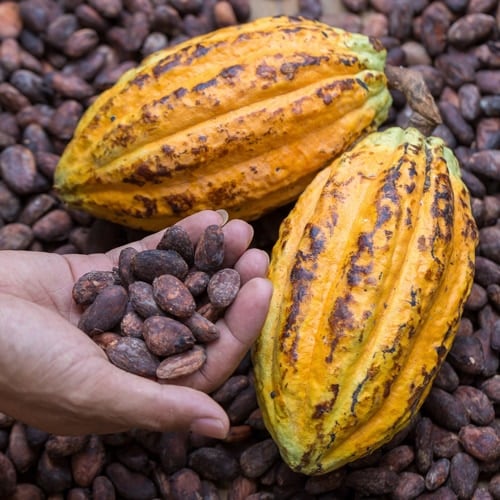
Cocoa and cacao are two products that come from the same plant, the Theobroma cacao tree. The two terms are often used interchangeably, but when it comes to labeling chocolate products in the US, they represent different things. Cacao is used to describe the fruit from the cacao tree, the raw seeds inside the fruit (cacao beans), and the powder made from the unroasted seeds (cacao powder). Cocoa is often used as a catch-all term to describe the drink hot cocoa, cocoa beans, and cocoa powder.
Cocoa Powder vs Cacao Powder
Cocoa powder is made from cacao beans that have been roasted at a high temperature. Cacao powder, however, is made from cacao beans that are lightly roasted and cold-pressed. The final cacao product retains more minerals and antioxidants than processed cocoa powder. When it comes to flavor, cacao powder has a deeper, earthier flavor than cocoa powder.
Cacao Powder FAQs
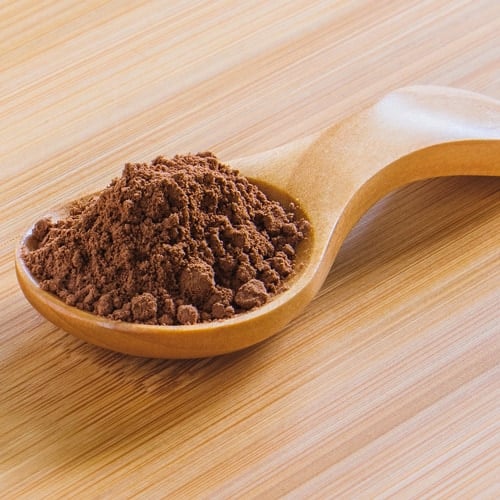
We answer some common questions about cacao powder below:
Which Is Healthier Cocoa or Cacao?
Raw cacao products are considered healthier than processed cocoa because they contain more minerals and antioxidants. Cacao powder is also considered a healthier option than chocolate products that contain high amounts of sugar.
Does Cacao Have Sugar?
Cacao powder contains no added sugars. Natural sugars are present, but the amount is negligible, usually less than 0.1 grams.
Is Cacao Acidic?
Yes, cacao powder is naturally acidic with a pH level of around 5-6. Why is this important? The acidity in cacao powder will react with baking soda to create leavening (rise).
Cacao powder is the perfect ingredient if you're trying to introduce healthy, superfoods into your menu. It works especially well in smoothies and snacks when you want to increase the nutritional value while adding a delicious, dark-chocolate flavor.
Related Resources

What Is Ruby Chocolate?
Ruby chocolate is one of the four types of chocolate and is made from ruby cacao beans. Belgian chocolate company Barry Callebaut developed ruby chocolate in 2004 and launched it in its market-perfected form in 2017. Ruby chocolate’s unique color and taste are beloved by pastry chefs everywhere who want to bring a new element to their confectionaries. Shop All Ruby Chocolate Ruby Chocolate Taste Ruby chocolate’s flavor profile has intense fruitiness, specifically with a fresh berry taste and a hint of sour smoothness. Where to Buy Ruby Chocolate You can buy ruby chocolate from online stores, select grocery stores, or pre-made recipes using ruby chocolate from chocolate shops! How Is Ruby Chocolate Made? Ruby chocolate goes through an extensive bean-to-bar process: The ruby cacao beans are grown and harvested in the Ivory Coast, Ghana, and Ecuador. Once harvested, ruby cacao beans are fermented, sun-dried, selected, and shipped to the Barry Callebaut facility in Belgium. Once they arrive at the facility, the ruby cacao beans undergo quality checks and begin the process of becoming couverture (high-quality chocolate). The beans now undergo whole bean roasting, which means they are roasted in the shell. This practice helps to preserve and develop the delicate flavors and aromas of cocoa beans. After roasting, the cocoa nibs are separated from the shell. They are then ground into a fine cocoa liquor, which is then mixed with the other ingredients to create a couverture dough. The dough is refined and then conched (agitated by surface scraping) to develop the dough into a liquid as well as unify and balance the flavors. Finally, the couverture is tempered and molded into the Callets™ and ready for packaging. Ruby Chocolate Ingredients Below are the ingredients in ruby chocolate: Sugar Cocoa butter Non-fat dry milk Whole milk powder Unsweetened chocolate Soy lecithin Citric acid Natural vanilla flavor How to Use Ruby Chocolate Because ruby chocolate has a medium flow and viscosity, it can be used in a ton of different recipes. Here are some ways you can use ruby chocolate: Chocolate work Mousses Pastry cream Ice cream Cheesecakes Dessert sauces Frostings Icings It’s recommended to use ruby chocolate as purely as possible to really let the chocolate shine on its own, meaning that tempering and using it for chocolate work is best. Something to note: when baking with ruby chocolate, the vibrant pink color tends to fade a bit, but you can use natural food colorings like beetroot powder to bring back the pink hue. What to Pair with Ruby Chocolate Because ruby chocolate’s taste is so unique yet universal, ingredient pairing can range from traditional flavors like different types of vanilla to unexpected flavors like global cheeses or different tropical fruits. Here are ingredient pairing ideas for ruby chocolate: Almonds Pistachios Strawberries Raspberries Stone fruits Passion fruit Currants Cherries Matcha Rose Dessert wines Champagne Beers Bourbon Caviar Goat cheese Camembert Honey Vanilla Basil Mint Edible flowers How to Store Ruby Chocolate Chocolate is sensitive to air, light, and humidity, and can soak up other strong smells that are nearby. To avoid all of these mishaps, store your ruby chocolate in an air-tight container that is not see-through, or at the very least opaque. The chocolates should be kept in a cool, dark corner away from light. Never store chocolate in the refrigerator. If not stored properly, ruby chocolate can turn to a grayish color. Is Ruby Chocolate Vegan? No, ruby chocolate is not vegan. However, ruby chocolate is vegetarian-friendly! Is Ruby Chocolate Gluten-Free? Yes, ruby chocolate is gluten-free. It is processed in a facility that does not have gluten or wheat present. As the fourth type of chocolate after dark, milk, and white, ruby chocolate has a lot to live up to. Between its brilliant color and unique flavor, ruby chocolate creates a whole new confectionary experience for pastry chefs. It also makes a great gift for bakers who want to try this chocolate for the first time, or simply can’t get enough!

Does Chocolate Go Bad?
Chocolate doesn’t go bad. Yes, you read that correctly! If your chocolate smells/tastes normal and has no mold growth, then it is safe to consume. The best-by date printed on chocolate packaging signifies when its flavor, aroma, and mouthfeel will decline, not when it is inedible. How long chocolate stays in a fresh, potent, and premium condition varies for each type of chocolate. While chocolate doesn't go bad, there are a few aesthetic and flavor culprits you want to guard against. Heat and moisture alter the appearance and texture of chocolate, but they don't corrupt its flavor. If you bite into a piece of chocolate expecting a delicious treat and receive an unsavory mouthful, your chocolate probably absorbed an environmental aroma. Store chocolate in an airtight container to prevent flavor perversion. We'll answer some of the most common questions about chocolate freshness. Shop All Bulk Chocolate If you want to skip ahead to a specific chocolate shelf-life topic, click below: How Long Different Types of Chocolate Last Can Chocolate Go Bad? What Is Chocolate Bloom? How to Store Chocolate How Long Does Chocolate Last? Because they contain varying amounts of cocoa butter and non-shelf stable additives, dark, milk, and white chocolate have different best-by dates. Below, we explain how long each type of chocolate lasts below. Does Cocoa Powder Go Bad? Devoid of fat content, cocoa powder will not go bad. However, it will lose its potency. If unopened and stored in a cool, dry place, cocoa powder keeps a rich flavor for four years. Once opened, cocoa powder is best within the first two years with proper storage. Do Chocolate Chips Go Bad? The freshness date of chocolate chips correlates to their type of chocolate. It is a faux pas to store chocolate in the freezer or refrigerator because the changing temperatures and moisture induce blooming. However, if you plan to bake with or temper your chocolate chips, you can extend their freshness date by up to three years by storing them in an airtight container in the freezer and eight months in the refrigerator. Does Milk Chocolate Go Bad? Milk chocolate is safe to consume unless it’s molding, but it will lose flavor depth. Unopened milk chocolate stays rich and aromatic for approximately one year after it’s packaged. If opened, use the milk chocolate within eight to ten months. Unless it has an off-putting smell or flavor or has mold growing on it, milk chocolate is safe to consume past its expiration date. Does Dark Chocolate Go Bad? Dark chocolate remains in premium condition for two years when unopened and stored in an airtight container away from moisture and heat. If opened but stored in ideal conditions, dark chocolate will keep top quality for about a year. Because dark chocolate doesn’t contain dairy products, it lasts longer than either milk or white chocolate. Like all chocolate, dark chocolate doesn’t go bad or become unsafe to consume (unless visibly molding), but it loses flavor and aroma. Does White Chocolate Go Bad? White chocolate is best within six months of packaging when unopened and stored in an airtight container. Opened white chocolate remains fresh for approximately four months. White chocolate is the most sensitive to heat and moisture and is prone to blooming. Store it in a cool and dry place to preserve its appearance. Do Chocolate Truffles Go Bad? Chocolate truffles can spoil over time because they're filled with non-shelf stable, moist ingredients. Their delicate structures will lose flavor quality long before they go bad. Chocolate truffles taste best within the first four months of their preparation. Does Ruby Chocolate Go Bad? Ruby chocolate (made from ruby cacao beans) is safe to consume unless it molds. However, its berry flavor is most robust within its first year. Consume ruby chocolate within eight months of opening to savor this unique delicacy in its prime. Ruby chocolate’s striking pink hue fades when it’s exposed to sunlight, and it takes on a gray-pink appearance when it’s exposed to moisture or heat. Can Chocolate Go Bad? Chocolate can go bad if it’s mixed with less shelf-stable ingredients. While the fat source in chocolate, cocoa butter, is extremely shelf-stable, added flavoring ingredients can expire and make chocolate treats go bad. Chocolate candies with any of the following will have shorter best-by dates and can go bad if not stored properly: Chocolate Candy Mix-Ins That Can Make Chocolate Go Bad Dried Fruit Caramel/Toffee/Butterscotch Nut Butter Other Moist/Wet Ingredients Can Expired Chocolate Make You Sick? If the expired chocolate doesn’t have mix-ins, it won’t make you sick. Expired chocolate will have a weak flavor but is safe to consume unless it has mold growing on it, has an off-putting smell, or a distasteful flavor. Does Chocolate Go Bad When It Turns White? Just because your chocolate has turned white doesn’t mean it is bad. The white film on chocolate is usually just chocolate bloom, a scientific process of fat or sugar in chocolate crystallizing and coming to the surface. Here is how you can tell the difference between mold and bloom: Moldy chocolate has white fuzz growing above its surface and will feel fuzzy to the touch. Bloomed chocolate has a chalky layer or gray/white streaks on its surface and will feel slick to the touch. Back to Top What Is Chocolate Bloom? Chocolate bloom is the term confectioners use to describe chocolate that appears dusted or streaked with gray. Despite its altered appearance, bloomed chocolate is delicious and safe to consume. Moisture and heat cause chocolate to bloom. Heat alters the fat molecules in chocolate candy, and moisture alters its sugar molecules. Discover the differences between sugar bloom and fat bloom below. What Is Fat Bloom? Fat bloom occurs when chocolate is exposed to warm temperatures. Heat causes cocoa butter to soften, separate from the other ingredients, and rise to the surface. When the chocolate re-solidifies, it will have a “bloom” of cocoa butter crystals. Fat bloom looks like a gray cast or white streaks on the surface of the chocolate. It is the most common type of chocolate bloom. What Is Sugar Bloom? Sugar bloom occurs when chocolate is exposed to moist environments (ex: humidity or refrigeration). Moisture causes sugar content to evaporate and form large sugar crystals on the surface of chocolate. Sugar bloomed chocolate can either look crystallized or dusty. How to Fix Chocolate Bloom Since chocolate bloom occurs when the fat or sugar in chocolate candy rises to the surface, you can fix chocolate bloom by reincorporating the fat or sugar into the chocolate. To fix chocolate bloom, melt the chocolate, stir it, pour it into a mold, and allow the chocolate to re-harden. It will re-solidify into unbloomed chocolate. Does Chocolate Bloom Affect Taste? Chocolate bloom doesn’t affect either the taste or shelf life of chocolate. The only difference between bloomed and unbloomed chocolate is its appearance. If you don’t want to sell bloomed chocolate because of its reduced aesthetic appeal, melt bloomed chocolate and use it to make bakery items like chocolate-dipped macaroons. Can You Eat Bloomed Chocolate? You can safely eat and enjoy bloomed chocolate. It will taste the same as its unbloomed counterparts. How to Store Chocolate? Store your chocolate in a sealed food storage container in your pantry to preserve its flavor and appearance. Sealing chocolate inside a storage container prevents flavor absorption. Both heat and moisture induce chocolate bloom, which is a cosmetic rather than a flavor problem, but customers may be unhappy with the appearance of bloomed chocolate. Never store your chocolate in the moisture-rich refrigerator or freezer unless you’re planning to bake with it. Review our chocolate storage tips below to learn how to store chocolate. Seal chocolate in an airtight container. Cocoa butter absorbs the flavor of whatever is nearby, so sealing chocolate preserves flavor integrity. Airtight containers also block out oxygen, which causes chocolate to oxidize and develop unappetizing flavors. Store chocolate in a cool and dry environment. Heat and moisture cause cosmetic damage known as chocolate bloom. Cool, dry environments with humidity lower than 55 percent and temperatures ranging between 65 and 68 degrees Fahrenheit will keep the emulsion of cocoa butter and cocoa solids shelf-stable. Keep chocolate away from light. Both sunlight and artificial light induce oxidation. Ruby chocolate loses some of its sought-after pink hue when it's exposed to direct light. Don’t refrigerate the chocolate you want to serve. Moisture in the refrigerator causes sugar bloom and reduces your chocolate’s aesthetic appeal. Since chocolate absorbs aromas, chocolate stored in the fridge may take on the flavor of your proteins and produce. You can use a wine fridge to store chocolate before shipping it. To ship chocolate and have it arrive intact, you want it to be as cold as possible. Wine refrigerators are not as cold as regular refrigerators and won’t cause sugar crystal bloom. Seal your chocolate before placing it in the wine fridge to prevent cross-flavor absorption. The freezer can extend flavor and aroma quality in chocolate. The changing temperatures and moisture may induce bloom, so only use this method for chocolate you plan to melt. Seal the chocolate before adding it to the freezer to prevent flavor perversion. How to freeze and defrost frozen chocolate without altering its texture: Temperature shock can alter the texture of chocolate. To prevent this, first move the chocolate to the refrigerator for 24 hours before adding it to your freezer. When it’s time to defrost the chocolate, put it in the refrigerator for 24 hours. Finally, let it come to room temperature before unwrapping it. Back to Top Chocolate rarely rots and becomes inedible, making it an excellent ingredient for your kitchen. However, chocolate loses flavor and aroma potency over time, and improper storage can lead to aesthetic disfiguration and flavor perversion. Reference back to this guide at any point to determine how long each type of chocolate remains in its prime, how to fix chocolate bloom, and how to store chocolate.
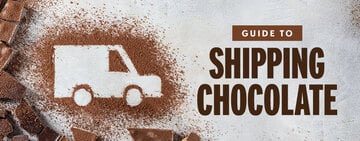
How to Ship Chocolate
Chocolate is a popular gift around Valentine's Day and Easter, but shipping chocolate can be a delicate process, as maintaining its quality and appearance during transit is crucial for customer satisfaction. From temperature control to packaging materials, several factors play a key role in ensuring that chocolates arrive at their destination in perfect condition. Whether you’re selling your treats online or shipping them from your storefront, understanding the best practices for shipping chocolate is essential for businesses looking to deliver a superior product to their customers. Shop All Mailing, Shipping, and Packing Supplies Use the following links to learn how to ship different chocolate candies: 1. Packing Chocolate for Shipping 2. Shipping Chocolate Without Melting 3. Best Way to Ship Chocolate 4. Shipping Chocolate Covered Strawberries 5. Shipping Chocolate Covered Pretzels 6. Shipping a Breakable Chocolate Heart 7. Create an Unboxing Experience Shipping Chocolate in the Mail Check out our quick video to learn how to package your chocolate products for shipping: <iframe itemprop="embedURL" width="560" height="315" src="https://www.youtube.com/embed/xpcuvH9YwW4?si=8xXcbQtKVVdMPzKd?rel=0" frameborder="0" allowfullscreen></iframe> How to Pack Chocolate for Shipping As a chocolatier, you put time, love, and labor into creating delicious chocolate candies. Put just as much care into packing them so they arrive to your customers looking just as good as they left. Learn how to pack chocolate for shipping by following the steps below: Work with cold, clean hands. Chocolate has a softening point lower than the human body temperature, so run your hands under cold water before packaging your chocolate. Keep your chocolates in a wine cooler before shipping them. Shipping chocolate requires careful temperature planning because cold induces sugar bloom while warmth melts the chocolate. Many chocolatiers store their chocolates in wine refrigerators to cool them down without causing sugar bloom before shipping them. Add your chocolates to a chocolate box. Remember to take the same care and consideration for presentation as packing your chocolates at your storefront. A positive unboxing experience goes a long way toward generating brand loyalty. Build your shipping box. Use an insulated shipping box that is double or triple the size of your chocolate container. The additional space separates your chocolate from the heat and protects your truffles from getting smashed if the box dents in transit. Line the bottom of your shipping box with metalized bubble packaging. Metalized packing bubbles deflect the heat, insulate the chocolates, and provide cushioning. Decide whether you need cold packs. Based on the time of year, destination, and distance your chocolates are traveling, determine how many cold packs you need to prevent your chocolates from melting. If using cold packs, place one on the bottom of the shipping container. Wrap the cold packs in a resealable plastic food bag or another leak-proof container. This precaution prevents condensation from hurting your chocolates or leaking into the shipping box. Insert the chocolate box into the shipping container. If applicable, surround it with cold packs. Fill all remaining gaps with packing materials. Add a sheet of metalized insulation to the top of the package. It should cover the entire top of the package. Secure the shipping box. Tape all the seams to keep warm air from getting in. Add the shipping labels and mark the package as perishable and fragile. Your chocolates are ready for shipment! Chocolate Packaging Supplies Use the following chocolate packaging supplies to prepare your chocolate for shipping. Insulated boxes for shipping Cold packs for shipping chocolate Metalized bubble wrap Chocolate box Shipping paper Tape Mailing and shipping labels How to Ship Chocolate Without Melting The most challenging part of shipping chocolate is preventing it from melting. Chocolate softens at 72 degrees Fahrenheit, which puts it at risk of smudging, taking on fingerprints, and receiving structural damage. While chocolate's heat sensitivity makes shipping precarious, chocolatiers can thrive in the e-commerce market by following chocolate shipping best practices. Elect to delay shipment orders. Some chocolatiers elect to delay shipments if the temperature spikes. As long as you communicate, customers are less frustrated by prolonged arrival than by ruined products. Use overnight shipping. If you plan to ship chocolates in the summer, use overnight shipping to ensure they arrive intact. Choose insulating and cooling packing materials. Metalized bubble packaging insulates your chocolates and deflects the heat. Nestling your chocolate box in ice packs keeps them below their softening point. Don’t ship chocolate orders from Thursday through Sunday. Shipments leading up to and on Saturday and Sunday remain in hot warehouses over the weekend. To avoid this, let your customers know you won't ship orders placed on these days until Monday. Send them an email confirmation once their order ships so they have confidence and clarity about your process. Provide an arrival alert. After working hard to ensure your chocolates remain intact during transit, the last thing you want is for them to melt on your client’s doorstep. Provide updates on the shipping progress so your customer can bring them inside as soon as they arrive. Should You Ship Chocolates in the Summer? Some chocolatiers forgo shipping chocolate in the summer months. You might lose some business by foregoing summer shipments, and the proper packaging makes this profit reduction avoidable. However, shipping chocolate in the summer may not be cost-effective based on the size of your operation and the location of your primary clientele. Ask yourself these three questions to determine whether your chocolate shop is up to filling summer shipment orders: Where are you shipping to? If most of your clients are from warm-weather areas, mailing chocolates in the dead of summer will be expensive. Is it cost-effective? The additional fees may scare off customers, making it unrealistic to stock chocolate shipping supplies over the summer for the number of orders received. How big is your operation? Shipping chocolates during the hottest months of the year requires a vigilant eye on weather patterns, careful packaging, and detailed shipping timelines. If you are the sole employee of your chocolate business or operate with a limited staff, you may not have the help you need to tackle summer chocolate shipments. If you can't choose between the risk of losing business or losing products, you could exclusively ship to cool weather states from June through August. Alternatively, you could include a pop-up link to other candies you ship during the summer if a potential customer tries to add chocolate to their online cart during the hottest months. Back to Top Best Way to Ship Chocolate Now that you know how to package your sweets, you must determine the best way to ship your chocolate. Many chocolatiers offer standard and expedited shipping based on the season and candy purchased. If your client lives in a destination warmer than 70 degrees Fahrenheit, consider requiring them to ship Next Day Air via UPS. In cooler climates, USPS two-day mail is a reliable and economical alternative. Follow our top tips for the best way to ship chocolate. Know your chocolate box dimensions and average weight. Before choosing a shipping carrier, you need to know your packages’ average dimensions and weight to pick the most affordable carrier for your products. Provide total transparency. If your customer’s shipment requires ice packs and other special packing materials, charge for them. Patrons appreciate transparency, so give a breakdown of shipment costs at checkout and include the price of the ice packs. Consider including shipping in the sales price. Offering free shipping discloses the total expense of ordering your chocolates from the start. This method helps prevent abandoned carts once the customers see the shipping fees. Offer custom tracking. Post-purchase platforms allow you to create a customized tracking page. That way, customers can get an idea of when to expect the package and retrieve them from the elements as soon as they arrive. How to Ship Chocolate Covered Strawberries Shipping temperature-sensitive and perishable chocolate-covered strawberries requires extreme care. Follow these steps to ship your chocolate-covered strawberries and prevent spoiling. Chill the strawberries. Refrigerate the strawberries for two hours or until hard to prevent the chocolate from melting in transit. Once cold, package and ship. Chocolate-covered strawberries that are refrigerated for more than a day will not arrive fresh at their shipping destination. Wrap each chocolate-covered strawberry. Cellophane wrap will mold itself to the strawberry. Once wrapped in cellophane, place the strawberries in large baking cups. Place the strawberries in a sturdy container with a tight sealing lid. The container needs to be durable enough to protect the strawberries. Leave an inch of buffer space between the strawberries to prevent them from bumping into each other. Add your box of strawberries to an insulated box. This larger box will ward off heat, preserve your strawberries’ freshness, and keep the chocolate from melting. Lay packing peanuts or packing bubbles on the bottom of your shipping box. This creates a cushioning layer for your strawberries. Fill the empty spaces in your shipping container with packing materials. Once you secure the strawberry box on all sides, layer packing materials on top and seal the shipping container with packing tape. Choose the fastest delivery service. Keep the chocolate-covered strawberries from spoiling by selecting overnight, express, or one-day delivery. How to Ship Chocolate Covered Pretzels Because pretzels are prone to breakage and chocolate is prone to melting, you must take exceptional care when shipping chocolate-covered pretzels. We explain how to ship chocolate-covered pretzels below. Package the pretzels. If you use pretzel rods, individually heat-seal each pretzel before adding them to a sealable food-grade bag. For regular pretzels, heat-seal your servings together. Bags absorb the impact if the carrier drops the shipping container. If you place the pretzels in a rigid container, they are more likely to shatter from crashing against the hard material. Label and seal the food-grade bag. Add branding to your chocolate-covered pretzels and create an attractive unboxing experience. Add the bag to a bubble mailer. Bubble mailers help protect your chocolate-covered pretzels during transit. Assemble a mailing box. You can pick up large mailing boxes for free at the post office. Tape all the seams to prevent cold air from escaping when you add the ice packs. Fill in the shipping box. Lay a cushioning bubble packaging layer on the bottom of the shipping box. Then, add your bubbled mailer and surround it with packing bubbles. Insert ice packs. For smaller orders, use one 6 oz. ice pack and nestle it to the side of your bubbled mailer. For larger orders, add two 6 oz. ice packs, one to the side of the bubbled mailers and one in between them. Seal the shipping box. Add another cushioning layer atop the contents before sealing your shipping box. Seal all the edges to contain the cold. How to Ship a Breakable Chocolate Heart Breakable chocolate hearts are hollow chocolate hearts filled with candy and sprinkles. They come equipped with mini mallets and make a cute, interactive dessert experience for Valentine’s Day or anniversaries. Given their fragile nature, you must take extra care to ensure your clients don’t receive a shattered heart. Learn how to ship a breakable chocolate heart below. Pack your breakable chocolate heart in a heart-themed chocolate box. This opportunity allows your branding to shine. Wrap the chocolate box in packing bubbles. The bubble packaging provides the first layer of protection. Assemble your shipping container. Tape all seals so warm air doesn’t leak into your box. Lay air pillows on the bottom of your shipping container. This buffers against rough handling. Add the chocolate box to the shipping container. Include any notes, details, or promotional flyers at this stage. Drape packing bubbles over the chocolate box before adding the ice packs. The bubble packaging protects your chocolates from condensation. Add three ice packs. Place one on top of the chocolate box and the remaining two on its sides. Leave no space. Fill all remaining areas with packing materials. Tape the shipping box closed. Seal all the seams to preserve a cool internal temperature. How to Create an Unboxing Experience A chocolatier’s priority is to have their shipments arrive intact, but a memorable unboxing experience goes a long way to boost brand loyalty. It provides free advertising when customers post their unboxing experience on social media. Here are some tips for creating a chocolate unboxing experience your customers will want to share. Ship your chocolate in branded boxes. Knowing the box is from your chocolate shop as soon as it arrives builds anticipation. Use attractive and sustainable packing materials. Customize your internal materials to create a cohesive aesthetic. If you use sustainable packaging, include an insert that shares this information with your customers. Environmental responsibility can earn respect and boost brand loyalty. Think like a merchandiser. Consider the color scheme of the cushioning materials and how they complement your items. Use dividers to manage your products' placement, and browse the social media hashtags #unboxing and #flatlay for inspiration. Provide free samples. Free samples introduce your clients to other product lines and encourage repeat business. For example, if your customer ordered a shipment of your chocolate truffles, consider adding a sample of your caramels or toffee. Personalize the package. From handwritten notes to customizable gift packaging, personal touches encourage repeat business. Add inserts. Insert coupons, new flavor/product promotions, or branded stickers. Mark the package as perishable. This label is for the customer, not the carrier. If someone sends your chocolates as a gift, you want the recipient to know they should open the box upon arrival. Shipping Chocolate FAQs These are some of the most commonly asked questions when it comes to shipping chocolate: Can You Freeze Chocolates? While freezing is an excellent preservation strategy when shipping baked goods, avoid it at all costs when shipping chocolate. Cooling chocolate, then exposing it to warm air, causes condensation to form on its surface. The moisture dissolves some of the chocolate's sugar content. When the sugar recrystallizes, it creates a white, grainy layer known as “sugar bloom" that distorts the taste and texture of your chocolate. While traditional freezing and refrigeration are ill-advised, some chocolatiers store their chocolates in a wine cooler to prevent them from softening. Operating between 45 and 67 degrees Fahrenheit, wine coolers are not as cold as refrigerators. Setting a wine cooler to its warmest operating temperature keeps ganache-filled truffles intact without inducing a sugar bloom. Do All Chocolate Candies Have the Same Melting Point? While the average melting point for chocolate across all types is between 86 and 90 degrees Fahrenheit, not all chocolate candies have the same melting point. Chocolate candies use two extracted portions of the cocoa bean: cocoa solids and cocoa butter. Most white and dark chocolate contain comparable amounts of cocoa butter, but chocolatiers increase the candies' darkness by adding more cocoa solids. Since white chocolate has no cocoa solids to absorb liquefying cocoa butter, it melts fast. Milk chocolate and ruby chocolate contain some cocoa solids, but not as much as dark chocolate. Back to Top With the rise of ghost kitchens, storefronts are no longer necessary to sell gourmet chocolate desserts. However, you need a solid shipping strategy to ensure your goodies arrive intact. Whether your chocolate shop is ramping up its shipping strategy or you want to create a virtual chocolate brand, use this resource to deliver your chocolates without compromising them.
